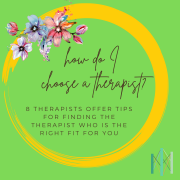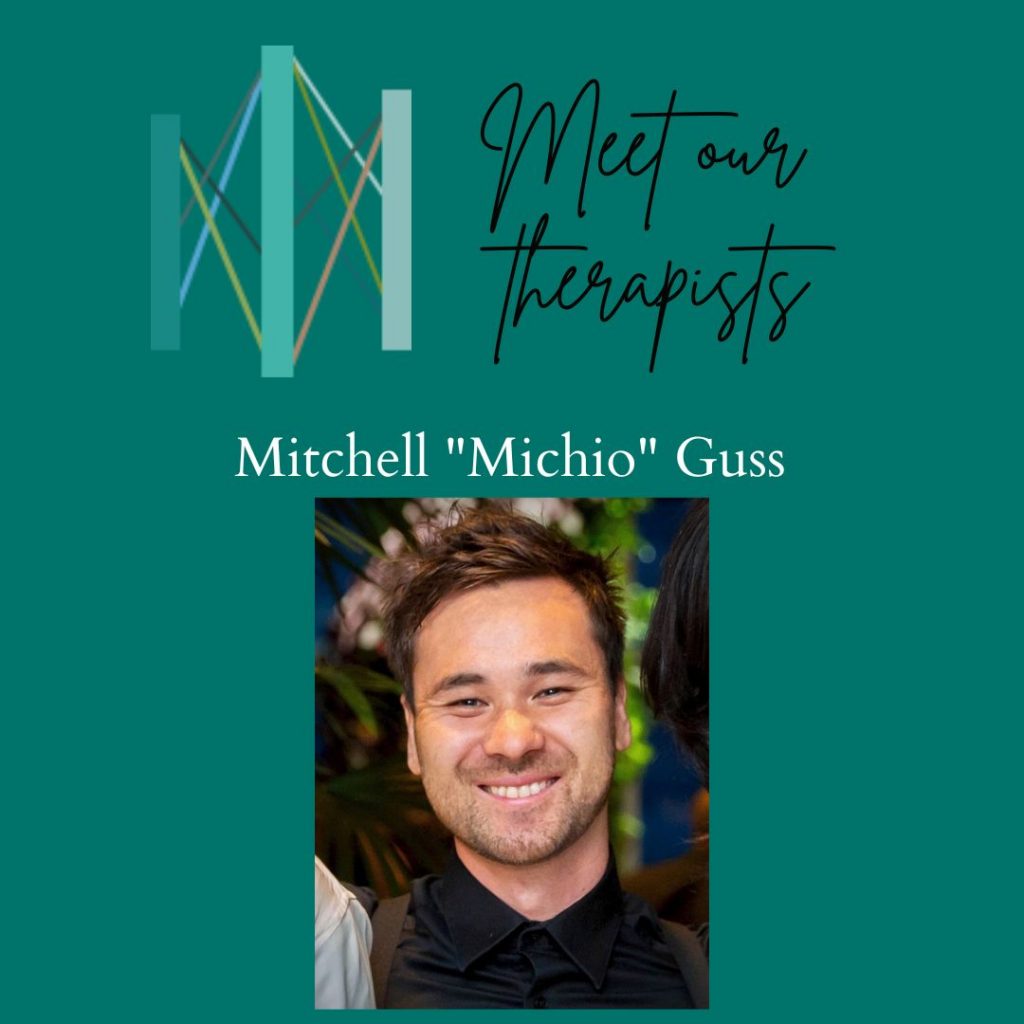

It can feel really challenging trying to figure out who the right therapist is for you. After all, you’re going to develop a relationship with this person in which you might be vulnerable and open. As a result, you want to choose the right person. And yet, how do you decide? In PART ONE of this blog series, we discussed how to find a therapist, with tips for narrowing down your options to a few good candidates. In this post, we talk about how to choose the right therapist from among those options. Eight of our therapists provide their advice to further help you out.
How to Choose a Therapist
How do you know if a therapist is the right fit for you? How do you choose a therapist off of your list of available options? For example, let’s say you’ve narrowed it down to those therapists that work with your health insurance. Moreover, you’ve reviewed fees, location, and available appointment days to narrow down your list. Now you have a handful of therapists that you could potentially work with. Which one is the right one?
Set Up a First Meeting
Browse your list of therapists and make an appointment with the one who feels like potentially the best fit.
- Schedule a phone or video consultation. Many therapists offer a short free consultation (15-30 minutes, depending on the therapist.) During this time, you can ask questions and get a feel for whether or not this person is the right fit. You might want to ask what their approach to therapy is, how they help their clients, or what you can expect from working with them. If you have a specific issue bringing you to therapy, you might ask about their experience with that issue.
- Schedule your first appointment. You might do this after the consultation or as a first step. This is a time to meet the therapist, ask more of those questions, and get a gut feeling about working with them.
At this point, you might have a gut feeling that says this isn’t going to work out. Gut feelings are important when it comes to choosing a therapist. Although, first impressions aren’t necessarily everything.
You can either try a few more sessions to really feel it out or start over with the next therapist on your list of potential matches. It does take time to develop a therapeutic relationship, so it might not feel like a perfect match right away. On the other hand, you might just know intuitively that this isn’t your therapist.
Saying “no more” after a first session or continuing with a few more sessions … either one is “right” – it’s up to you and the therapist. Feel free to talk to them about your questions and concerns. There’s no right or wrong way to choose a therapist. But here are some additional tips …
8 Therapists Answer: How Do I Choose The Right Therapist For Me?
Eight of our associate therapists share their best advice is for people like you who are trying to find the right therapist. Here are their responses:
Elizabeth Dausch gets us started with this helpful guidance:
“My advice would be: once you’ve narrowed down to a couple of candidates based on important criteria for you (e.g. areas of specialty, fee, etc.), set up a brief call with each of them. Pay attention to your inner responses while in conversation and the feelings/thoughts/body state you have after the call. How comfortable did you feel talking with each person?
Relationship fit is the biggest factor in therapy success, even if another candidate has a long list of certifications and 10 more years of experience. You could even set up an initial session with a few people to get a better sense of how they might work with you and decide from there.”
See an interview with Elisabeth Dausch here. Learn more about working with Elizabeth here.
Similarly, Heather Buchheim says:
“The most important factor is how comfortable you feel with the person and how well you connect. Research shows that what kind of modality or specific therapeutic techniques they use are way less important than your relationship with the person. A lot of that is intuitive, and you’ll start to get a feel from the first consultation/intake session. You can also try out a few sessions with someone as a trial period, since a 20 minute consultation usually isn’t enough to know. And talking to a few people is a good idea, because it gives you a way to compare who might be the right fit.”
In summary, meet with the therapist one or more times and see how the relationship feels as it starts to develop. This advice is echoed by many of out other therapists. For example,
Amy Golsong suggests that you ask yourself:
- Do you feel like you can say anything/whatever you would like to them?
- Do you feel your body soften or relax in their presence?
In other words, check in with your mind and body to see how you respond to those initial meetings with the therapist. This will help guide you to determining whether or not it’s the right fit.
Amy Golsong’s therapeutic approach blends talk therapy, somatics (body) and parts work. Learn more about working with Amy here.
Lauren Schneider puts it this way:
Mitchell “Michio” Guss offers this great tip:
Trust your heart.

Mitchell “Michio” Guss says, “My unique background has taught me to cherish culture and difference, yet not be bound by them. It’s as though I have an intimate insider’s experience and an objective outsider’s perspective at the same time. This stance informs all of the therapy that I do.” Learn more about working with Michio here.
Courtenay Houk gives us some more guidance about how to figure out if a therapist feels right to us:
Finally, Ajay Dave leaves us with this important reminder:
Additional Helpful Information:
- 20 San Francisco Bay Area Therapists You Might Want to Know
- How Do I Find a Therapist?
- 10 Signs Therapy Is Right For You Right Now
Contact us today to find out more about how we can match you with a therapist. Or browse our therapist directory to learn more about our therapists.








